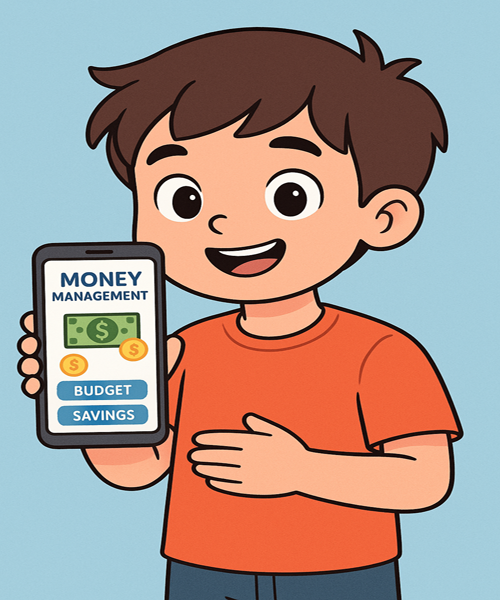Introduction: Why Money Management Apps Are Essential
Managing your money effectively has never been more important. With inflation, rising costs, and the need to plan for future goals, personal finance has become a critical life skill. Thankfully, technology offers countless solutions. Money management apps allow you to track expenses, monitor investments, budget efficiently, and even save automatically.
Whether you’re a student, working professional, or entrepreneur, the right app can help you save time, reduce financial stress, and make smarter money decisions. In this guide, we’ll explore the best apps for money management in 2025, detailing their features, pros, cons, and how they can transform your financial life.
1. Mint – The Complete Budgeting App
Overview: Mint has been a leader in personal finance apps for years. Owned by Intuit, it connects with your bank accounts, credit cards, and bills to give you a complete overview of your finances.
Key Features:
- Automatic expense tracking and categorization
- Bill reminders and alerts
- Credit score monitoring
- Budget planning and goal setting
- Investment tracking
Pros: Free to use, intuitive interface, excellent visualizations.
Cons: Ads can be intrusive, limited investment advice.
Why It’s Great: Mint is perfect for beginners who want a free all-in-one app to manage money, track spending habits, and save effortlessly.
Monetization Tip: Link your blog to Mint’s affiliate program for financial products, credit score services, or investment tools.
2. YNAB (You Need a Budget) – Master Your Budget
Overview: YNAB focuses on zero-based budgeting, ensuring every dollar is assigned a purpose. It helps you build control over your finances and break the paycheck-to-paycheck cycle.
Key Features:
- Real-time expense tracking
- Goal-oriented budgeting
- Educational resources for financial literacy
- Syncs across devices
Pros: Strong budgeting methodology, proactive financial planning, hands-on support.
Cons: Subscription-based, steep learning curve for beginners.
Why It’s Great: YNAB is ideal for those who want to actively manage money and save aggressively, offering a highly structured approach to budgeting.
Monetization Tip: Use affiliate links for YNAB subscriptions and financial planning webinars.
3. PocketGuard – Simplify Spending
Overview: PocketGuard simplifies money management by showing how much you can safely spend after bills, goals, and essentials. It’s perfect for those who feel overwhelmed by budgeting.
Key Features:
- “In My Pocket” feature calculates disposable income
- Automatic categorization of expenses
- Bill negotiation services
- Simple, easy-to-read dashboards
Pros: Easy to use, clear spending overview, helpful for saving.
Cons: Limited customization, fewer investment features.
Why It’s Great: PocketGuard is perfect for casual spenders who want a hands-off approach to budgeting but still track expenses efficiently.
4. Personal Capital – Track Wealth and Investments
Overview: Personal Capital is geared towards investors and wealth builders, offering tools for both budgeting and investment tracking.
Key Features:
- Net worth tracker
- Portfolio analysis
- Retirement planner
- Expense tracking and budgeting
Pros: Excellent investment tools, clear financial insights, retirement calculators.
Cons: Primarily geared toward high-net-worth users, some features require advisors.
Why It’s Great: If your goal is to grow wealth and manage finances strategically, Personal Capital gives you a 360-degree view of money and investments.
Monetization Tip: Promote Personal Capital’s investment advisory services or premium tools.
5. Goodbudget – Envelope Budgeting Made Easy
Overview: Goodbudget uses the envelope budgeting system, allowing you to allocate money for specific categories and stick to a spending plan.
Key Features:
- Virtual envelopes for budgeting
- Sync across devices for family budgets
- Expense tracking and reports
- Debt tracking
Pros: Simple interface, promotes disciplined spending, free version available.
Cons: Manual entry required, less automated than others.
Why It’s Great: Perfect for users who want a traditional envelope budgeting system in digital form.
6. Wally – Track Every Penny
Overview: Wally offers a global money management experience, allowing users to track income, expenses, and financial goals in multiple currencies.
Key Features:
- Expense tracking and receipt scanning
- Multi-currency support
- Budgeting and goal tracking
- Insights on spending habits
Pros: Simple, intuitive, supports international users.
Cons: Limited integrations with banks, occasional sync issues.
Why It’s Great: Wally is ideal for frequent travelers or freelancers who deal with multiple currencies and want a detailed financial snapshot.
7. EveryDollar – Budgeting the Dave Ramsey Way
Overview: Developed by financial expert Dave Ramsey, EveryDollar uses a zero-based budgeting approach.
Key Features:
- Track expenses by category
- Sync with bank accounts (premium version)
- Goal tracking for debt reduction and savings
- User-friendly mobile app
Pros: Clear, structured, motivational for debt-free living.
Cons: Free version is limited, premium requires subscription.
Why It’s Great: EveryDollar is excellent for people following debt reduction or money mastery programs, making budgeting simple and goal-oriented.
How to Choose the Best Money Management App
When selecting a money management app, consider:
- Your financial goals: Savings, debt reduction, investment, or expense tracking?
- Ease of use: Some apps are beginner-friendly, others require learning.
- Automation: Auto-syncing with banks, bills, and investments saves time.
- Security: Look for apps with strong encryption and two-factor authentication.
- Cost: Free apps are good for casual users; premium apps offer advanced features.
Tips to Maximize Your Money Management App
- Set clear financial goals: Know what you want to achieve—saving for a house, paying debt, or investing.
- Review regularly: Track expenses weekly or monthly for insights.
- Combine apps if needed: Budgeting + investing apps together can give full control.
- Automate savings: Many apps allow auto-transfer to savings or investments.
- Use alerts and reminders: Avoid missed bills and late fees.
Conclusion: Take Charge of Your Finances Today
Using money management apps is no longer optional—it’s essential for financial freedom. Apps like Mint, YNAB, PocketGuard, and Personal Capital make budgeting, saving, and investing easier than ever. By choosing the right app and consistently tracking your finances, you can reduce stress, increase savings, and achieve your financial goals faster.
Start with one app today, explore its features, and build the habit of managing your money like a pro. Your future self will thank you!

